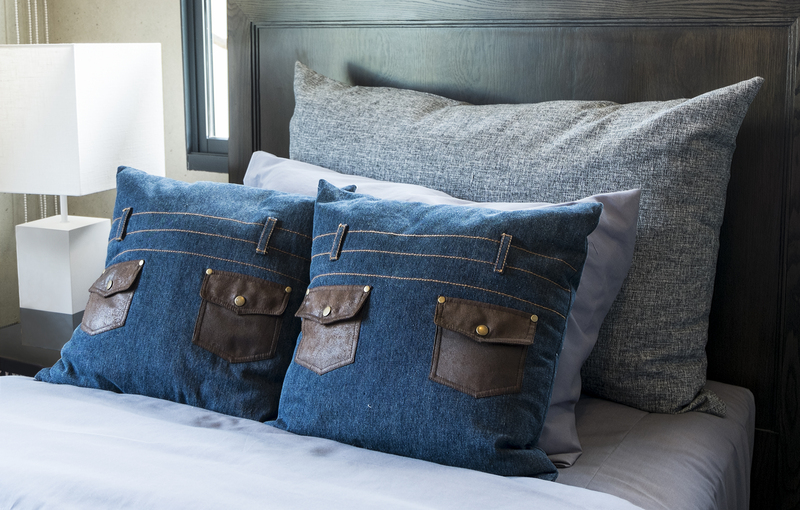Office Transformation: Embrace Minimalism and Declutter
In today's fast-paced business world, the physical and mental environment of an office can have a profound impact on productivity, creativity, and well-being. The office transformation movement, especially through the lens of embracing minimalism and decluttering, is gaining momentum across businesses of all sizes. Optimizing your workspace isn't just about aesthetics--it's about fostering an environment that inspires clarity and efficiency. This comprehensive guide will help you understand the power of minimalism in office design and provide actionable tips to declutter and transform your office space.

Why Minimalism Matters in the Modern Office
Minimalism is more than a design trend; it's a lifestyle and a philosophy that can revolutionize the way your office operates. Embracing office minimalism encourages purposeful use of space, reduces distractions, and embodies a sense of calm. Let's explore why minimalist office transformation is essential in the current corporate climate:
- Enhanced Focus: A decluttered environment minimizes visual distractions, sharpening mental acuity and promoting concentration.
- Boosts Productivity: With fewer obstacles and streamlined workflows, employees can work more efficiently and stay on top of their tasks.
- Promotes Creativity: Open, uncluttered spaces encourage creative thinking and problem-solving.
- Improves Well-being: Clutter is known to increase stress. A clean, minimal office can enhance mood and overall health.
- Professional Appearance: Minimalist offices radiate a sense of professionalism and order to clients and visitors.
Understanding the Concept of Minimalism in Office Design
Minimalism in the office context refers to stripping away the non-essential, leaving only what is necessary, functional, and meaningful. Minimalist office design often incorporates neutral colors, simple layouts, and multipurpose furniture. The philosophy is guided by the principle "less is more."
The Benefits of a Decluttered Office Environment
Cutting down on clutter involves both physical and digital spaces. When your workspace is organized, you enjoy multiple benefits:
- Efficiency: Spend less time looking for documents and supplies.
- Safety: Decluttered environments reduce the risk of accidents and injuries.
- Morale: Employees feel better about their environment, which can increase job satisfaction.
- Brand Perception: Visitors associate minimal, organized offices with efficiency and trustworthiness.
Common Obstacles to Office Decluttering
*Many businesses struggle to declutter their offices for a variety of reasons, including:*
- Sentimental attachment to old items
- Lack of time or resources
- Unclear decluttering strategies
- Company culture resistant to change
Recognizing these challenges is the first step toward effective office transformation.
Step-by-Step: How to Transform Your Office with Minimalism
1. Audit Your Current Space
Before making any changes, take stock of what you currently have in your office. Examine each workspace, shared area, and storage solution. Make a list of what is essential versus what hasn't been used in the last six months. This honest assessment forms the backbone of your decluttering process.
2. Set Clear Minimalism Goals
Define the purpose of your office transformation. Are you looking to increase collaboration, improve efficiency, or boost creativity? Establish clear objectives so that every change aligns with your vision of a minimalist office.
3. Purge the Excess
- Sort: Organize items into keep, donate, discard, or recycle categories.
- Digitize Documents: Transition to paperless systems where possible to eliminate bulky file cabinets.
- Remove Redundant Equipment: Outdated electronics and broken furniture should be responsibly disposed of.
*The goal is to eliminate anything that doesn't serve your core office functions or support your team's workflow.*
4. Design with Intention
Now comes the fun part--rebuilding your workspace with purpose. When planning your minimalist office design:
- Favor multifunctional furniture to maximize utility.
- Embrace open spaces and airy layouts, reducing unnecessary partitions and bulky shelves.
- Choose a neutral color palette to create a sense of calm and uniformity.
- Add a few well-chosen accessories (like plants or artwork) for subtle character without cluttering surfaces.
5. Organize Storage Concisely
Every item should have a dedicated, easily accessible space. Label storage containers, use drawer organizers, and keep surface areas clear. Employees should be encouraged to maintain these standards daily.
6. Optimize Digital Workspaces
Office transformation isn't limited to physical clutter--digital clutter can be equally distracting.
- Regularly clean up desktop files and email inboxes.
- Implement cloud-based storage for easy file sharing and editing.
- Archive or delete outdated digital documents and emails.
- Establish clear protocols for digital file naming and organization.
*A streamlined digital environment complements your minimalist office transformation and helps reduce stress.*
Maintaining Minimalism: Creating Long-Term Habits
Decluttering and embracing minimalism isn't a one-time event--it requires continuous effort and an occasional reset. Encourage employees to keep minimalism top of mind with these best practices:
- Daily Reset: Schedule five minutes at the end of each day for staff to tidy their work areas.
- Monthly Audits: Dedicate time each month to assess and clear out new clutter.
- Stay Digital: Continue moving towards a paperless office by scanning and storing important documents online.
- Policy Implementation: Develop and communicate clear guidelines regarding personal item limits, desk sharing, and file storage.
- Feedback Loops: Encourage staff to suggest improvements for maintaining a minimalist office culture.
Fostering a Minimalist Office Culture
Transitioning to a minimalist, decluttered office isn't just about rearranging furniture or discarding files; it's a shift in mindset. Involve your team in the process, explain the benefits, and provide training on the new organizational methods.
*Cultivating a sustained minimalist approach leads to ongoing productivity and satisfaction across the team.*
Minimalism in Different Office Types
Small Business Offices
For small businesses, embracing minimalism helps make the most of limited space. Use vertical storage, limit decor, and promote hot-desking to maximize flexibility.
Corporate Workspaces
Large organizations can benefit from centralized, streamlined storage and modular workspaces. Encourage teams to share resources and use collaborative spaces efficiently.
Home Offices
Remote workers should prioritize comfort and functionality with minimal distractions. Invest in ergonomic furniture and limit supplies to only the daily essentials.
Digital Tools to Aid Your Office Transformation
To sustain a minimalist, decluttered office, leverage modern digital tools that simplify everyday tasks:
- Project Management Apps: Tools like Asana, Trello, and Monday keep teams organized with digital task boards.
- Time Tracking Software: Apps like Toggl help monitor productivity and prevent workflow congestion.
- Cloud Storage: Google Drive, Dropbox, and OneDrive allow you to easily share, store, and retrieve documents.
- Document Scanning: Use apps like Adobe Scan or CamScanner to digitize paperwork instantly.
- Communication Platforms: Slack or Microsoft Teams centralize communication, reducing email overload.
Top Tips for a Successful Minimalist Office Makeover
- Start Small: Tackle one workstation or section at a time for steady progress.
- Personalize Selectively: Allow individual touches, but set boundaries for the number and size of personal items.
- Maximize Light: Use natural light and minimalist fixtures to brighten the workspace and uplift mood.
- Invest in Quality, Not Quantity: Select durable, multipurpose office furniture over filling spaces with unnecessary items.
- Regularly Reassess: Periodically review office layout and contents to ensure minimalist standards are met.

Frequently Asked Questions (FAQ) about Office Decluttering and Minimalism
How do I convince my team to embrace office minimalism?
*Highlight the productivity, health, and efficiency benefits of a clutter-free space. Involve team members in planning and decision-making to secure their buy-in and address their concerns.*
How often should we declutter our office?
A quarterly or monthly routine is ideal. Encourage daily tidying to maintain the standard between major decluttering sessions.
Is it possible to have a minimalist office with a lot of paperwork?
*Absolutely!* Invest in digital tools for scanning and archiving. For documents required in hard copy, use streamlined filing solutions and regularly purge outdated files.
What if my workspace feels empty after decluttering?
That's an opportunity! Embrace the open space--it promotes calm and focus. Add a few well-chosen elements like a plant or a piece of art for character without compromising minimalism.
Conclusion: Make Office Transformation Your Competitive Edge
Adopting minimalism and decluttering strategies for your office transformation is an investment in your company's productivity, health, and brand image. A minimalist, clutter-free office aligns physical surroundings with your business goals, inspiring innovation and instilling confidence in clients and employees alike.
*Don't wait--start your office transformation journey today. Embrace minimalism, declutter your workspace, and transform your office into a beacon of productivity, creativity, and modern professionalism.* Stay committed, involve your team, and enjoy the rewards of a beautifully simple, efficient workspace.
- Enhanced productivity through a decluttered setting
- Stronger brand and client impact with a minimalist appearance
- Healthier, happier employees in a stress-reducing space
*Minimalism is not about having less. It's about making space for more of what matters.*